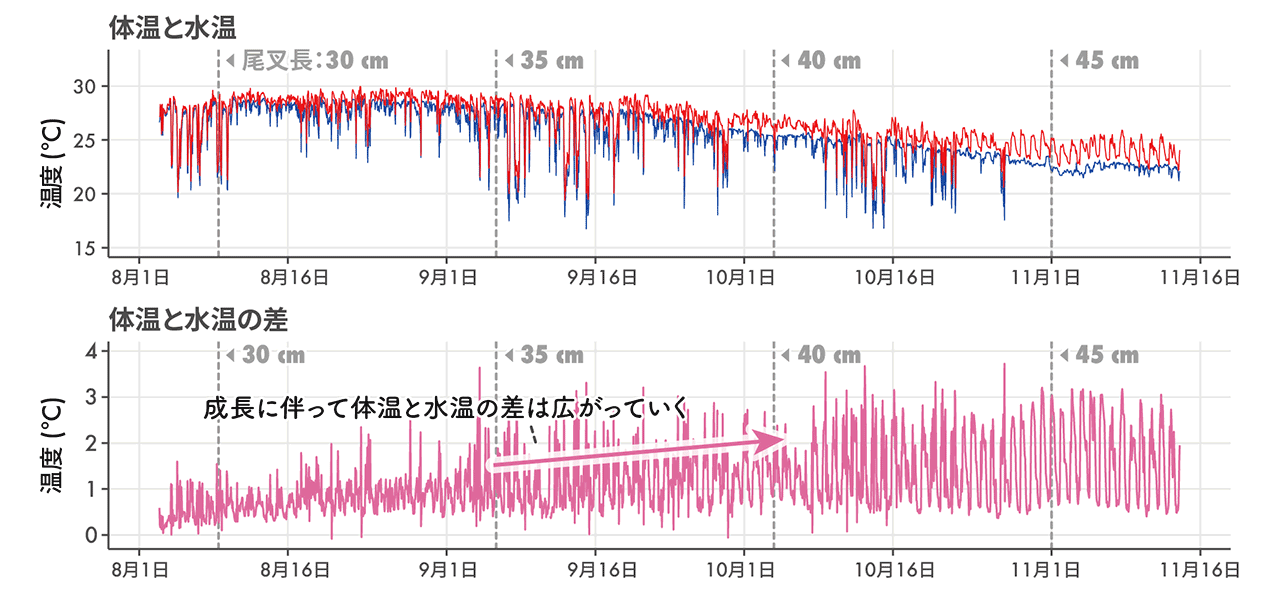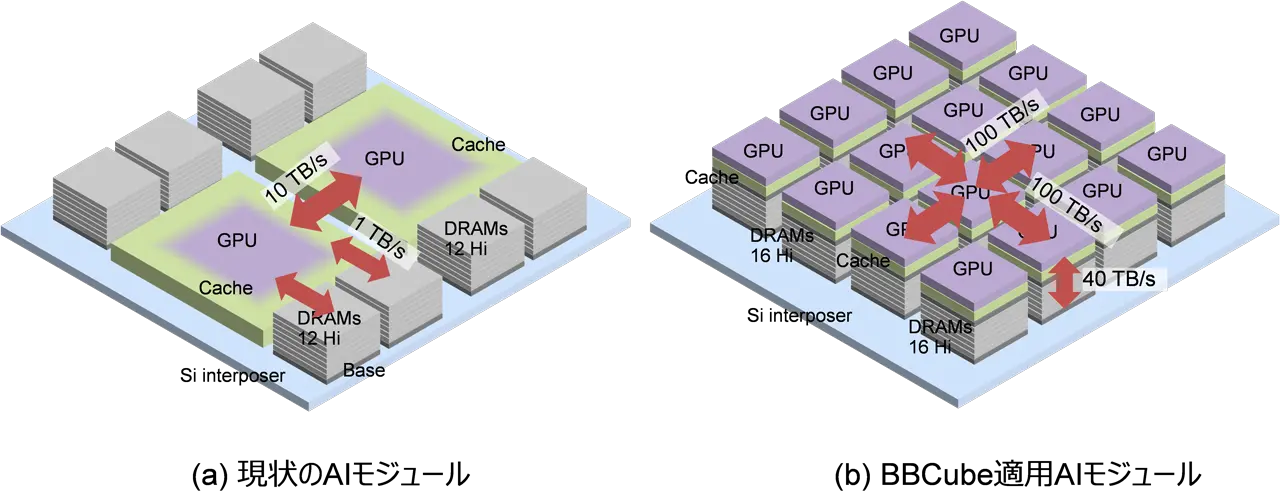2025-05-29 東京大学

図1:体温と水温の時系列データ(上)とその差の時系列データ(下)
<関連情報>
- https://www.aori.u-tokyo.ac.jp/research/news/2025/20250529.html
- https://www.aori.u-tokyo.ac.jp/research/news/2025/files/20250529_summary.pdf
- https://www.frontiersin.org/journals/physiology/articles/10.3389/fphys.2025.1512043/full
太平洋クロマグロにおける稚魚特異的な高熱産生は吸熱発達の初期段階に寄与する
Juvenile-specific high heat production contributes to the initial step of endothermic development in Pacific bluefin tuna
Takaaki K. Abe,Maho Fuke,Ko Fujioka,Takuji Noda,Hiroyuki Irino,Yoshikazu Kitadani,Hiromu Fukuda,Morten Bo Søndergaard Svendsen,John Fleng Steffensen,Takashi Kitagawa
Frontiers in Physiology Published:29 May 2025
DOI:https://doi.org/10.3389/fphys.2025.1512043
Pacific bluefin tuna (Thynnus orientalis; PBT) can maintain their body temperature above ambient water (i.e., thermal excess) through high heat production and heat retention. The endothermic ability develops at 20–40 cm fork length (Lf), which has been attributed to improved heat retention. Meanwhile, the contribution of heat-production capacity to the development of thermal excess is insufficiently understood. This study aimed to elucidate the ontogenetic pattern of heat production and its contribution to endothermic capacity in juvenile PBT using a heat-budget model (HBM) and swim-tunnel respirometry. The HBM was applied to 2–4 months of biologging data from juveniles (23–50 cm Lf; 200–4 kg) to estimate heat production rates (˙Tm), revealing that these rates remained high up to approximately 700 g and declined thereafter. Moreover, the comparison of the development of endothermic capacity with the HBM-estimated parameters suggests that in the early juvenile stages, when PBT rapidly develop the thermal excess, the high ˙Tm contributes to the thermal excess. The high ˙Tm in this stage implied the juvenile-specific development of aerobic capacity; therefore, metabolic rate and aerobic capacity-related tissues (red muscle and ventricle) were measured, and the scaling exponents were calculated in this stage (16–28 cm Lf; 50–420 g). Swim-tunnel respirometry was conducted on juvenile PBT in Japan (August–September 2022 and 2023), and the collected samples were used to measure red muscle and ventricular masses. The scaling exponents of tunas throughout life history are generally in the range of 0.6–0.9, while those for these traits were 1.0 or greater in this size range, supporting the juvenile-specific aerobic capacity development. In conclusion, this study reveals the ontogenetic characteristics of heat production-related traits in PBT and provides new insights into the developmental process of endothermic ability, beyond heat retention capacity.



